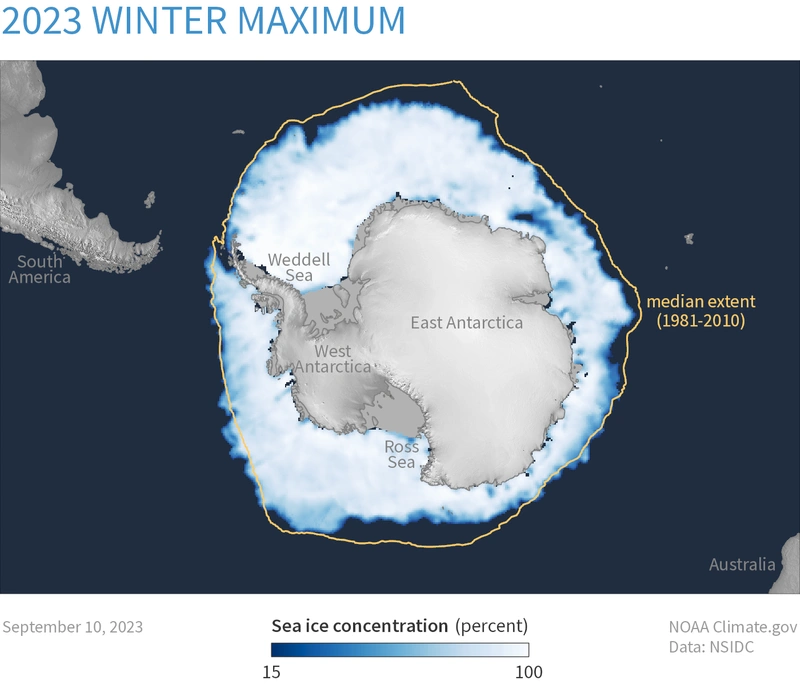Amid all the changes in Earth’s climate, sea ice in the stormy Southern Ocean surrounding Antarctica was, for a long time, an odd exception. The maximum winter sea ice cover remained steady or even increased slightly from the late 1970s through 2015, despite rising global temperatures.
That began to change in 2016. Several years of decline led to an all-time record low in 2023, more than five standard deviations below the average from the satellite record. The area of sea ice was 2.2 million square kilometers below the average from the satellite record, a loss almost 12 times the size of Washington state.
The most recent winter’s peak, recorded in September 2024, was very close to the previous year’s record low.
University of Washington researchers show that the all-time record low can be explained by warm Southern Ocean conditions and patterns in the winds that circled Antarctica months earlier, allowing forecasts for sea ice coverage around the South Pole to be generated six or more months in advance.
This could support regional and global weather and climate models.
The authors used a global climate model to simulate how ocean and air temperatures, including longer-term cycles like El Niño and La Niña, affect sea ice in the Southern Ocean.
Results showed that the 2023 El Niño was less important than previously thought. Instead, an arching pattern of regional winds, and their effects on ocean temperatures up to six months in advance, could explain 70% of the 2023 record-low winter sea ice. These winds cause ocean mixing in the Southern Ocean that can pull deeper warm water up to the surface, thus suppressing sea ice growth. Winds can also push sea ice poleward toward Antarctica to prevent the sea ice edge from expanding north, transport heat from lower latitudes toward the poles, and generate ocean waves that break up sea ice.
Using the same approach for the 2024 observations correctly predicted that this would be another low year for Southern Ocean sea ice cover.
Antarctic sea ice is important because it affects marine and coastal ecosystems and interactions between ocean and atmosphere in the Southern Ocean. It also affects global climate by reflecting sunlight in the Southern Hemisphere and influencing ice sheets and global currents.
As summer arrives in the Southern Hemisphere, the current sea ice extent remains sparse around Antarctica, close to a record low for this time of the year.
The study was published in Nature Communications Earth & Environment and was funded by the National Science Foundation and the U.S. Department of Energy.

